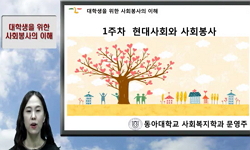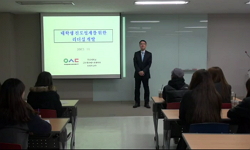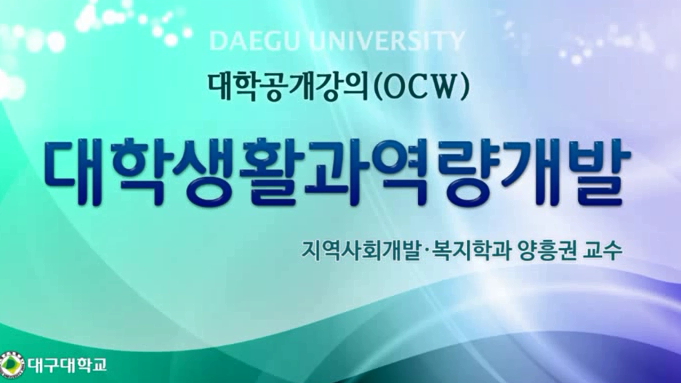This study is to inquire into the therapeutic possibility of story-making by analyzing the correlationship between the depression of university students and DAS story. To do this, the three procedures are carried out. Firstly, how is the depression le...
http://chineseinput.net/에서 pinyin(병음)방식으로 중국어를 변환할 수 있습니다.
변환된 중국어를 복사하여 사용하시면 됩니다.
- 中文 을 입력하시려면 zhongwen을 입력하시고 space를누르시면됩니다.
- 北京 을 입력하시려면 beijing을 입력하시고 space를 누르시면 됩니다.

이야기 만들기의 치유적 가능성 – 대학생 우울과 DAS 이야기의 상관성을 중심으로 – = A Therapeutic Possibility of Story-Making -Focused on the correlationship of DAS story and depression of university students
한글로보기https://www.riss.kr/link?id=A104032936
-
저자
김기호 (영남대학교)
- 발행기관
- 학술지명
- 권호사항
-
발행연도
2011
-
작성언어
Korean
-
주제어
Story-making ; University Student ; Depression level ; Alternative story ; DAS(Draw-A-Story) ; Narrative therapy ; Multilayering therapeutic process. ; Story-making ; University Student ; Depression level ; Alternative story ; DAS(Draw-A-Story) ; Narrative therapy ; Multilayering therapeutic process. ; 이야기 만들기 ; 대학생 ; 우울 수준 ; 이야기 그림 검사 ; 대안의 이야기 ; 서사치료 ; 다층적 치유 과정.
-
등재정보
KCI등재
-
자료형태
학술저널
- 발행기관 URL
-
수록면
67-98(32쪽)
-
KCI 피인용횟수
0
- 제공처
-
0
상세조회 -
0
다운로드
부가정보
다국어 초록 (Multilingual Abstract)
This study is to inquire into the therapeutic possibility of story-making by analyzing the correlationship between the depression of university students and DAS story. To do this, the three procedures are carried out. Firstly, how is the depression level according to the narrative structure aspects of DAS picture story? Secondly, how is the depression level according to the mark of sentiment contents in DAS picture story? Thirdly, how is the depression level according to the self-image mark of DAS picture story? The results are as follows.
Firstly, the DAS story's structure shows a difference between the nondepression group and the depression group. A lot of stories made by the nondepression group are framed into 'deficiency-process of solving problem-sufficiency'. On the other hand, a lot of stories made by the depression group are framed into 'deficiency-process of solving problem-deficiency'. It means that there is a significant correlationship between the depression index of university students and the structure of the story.
Secondly, the sentiment contents in DAS story shows a difference between the nondepression group and the depression group. The sentiment contents of the story made by the nondepression group has a high mark, that they are positive. On the other hand, the sentiment contents of the story made by the depression group has a low mark, that they are negative. It means that there is a significant correlationship between the depression index of university students and the sentiment contents.
Thirdly, the self-image in DAD story shows a difference between the nondepression group and the depression group. The self-image in the stories by the nondepression group has a high mark. It is a pleasant fantasy or image of satisfying his own desire. On the other hand, the self-image in the stories by the depression group has a low mark, that the image is an unhappy and abnormal one. It means that there is a significant correlationship between the depression index of university students and the self-image.
The characteristics of university students with high depression index and low depression index are cleared out by way of analyzing the DAS stories. As part of effort to make the depression degree better for the university students with high depression degree, it is necessary to carry out a task to make the abnormal DAS stories into a new, positive ones. To do this task, it helpful to use the techniques of narrative therapy. It enables students, especially students with high depression index or level, to separate the matters or problems in the DAS stories, to seek an experience of new possibilities, and then to make an alternative story by way of the newly-chosen experience. If the narrative therapy, the sphere of the clinical therapy, is unified into the sphere of DAS in which literature and art are combined with 'an intermediate therapy', the story-making, at least, a multilayering therapeutic process for the betterment of the depression is possible.
국문 초록 (Abstract)
본고에서는 이야기 만들기(story-making)의 치유적 가능성을 모색하기 위한 작업의 일환으로 명제, ‘대학생이 만든 이야기는 그들의 우울 지수를 반영한다.’를 입증하고자 하였다. 목적을 달...
본고에서는 이야기 만들기(story-making)의 치유적 가능성을 모색하기 위한 작업의 일환으로 명제, ‘대학생이 만든 이야기는 그들의 우울 지수를 반영한다.’를 입증하고자 하였다. 목적을 달성하기 위해 첫째, DAS 그림 이야기의 서사 구조 양상에 따라 우울 수준은 어떠한가? 둘째, DAS 그림 이야기의 정서내용 점수에 따라 우울 수준은 어떠한가? 셋째, DAS 그림 이야기의 자기상 점수에 따라 우울 수준은 어떠한가? 라는 세부 문제를 설정하였다.
분석 결과는 다음과 같다. 첫째 DAS 이야기 구조는 비우울집단과 우울집단 간에 차이를 보인다. 비우울집단에서 만든 이야기의 상당량은 ‘결핍-문제해결과정-충족’으로 구조화 된다. 반면 우울집단에서 만든 많은 수의 이야기는 ‘결핍-문제해결과정-결핍’으로 구조화 된다. 이것은 대학생의 우울 지수와 이야기 구조 사이의 유의미한 상관성을 의미한다. 둘째 DAS 이야기에 반영된 정서 내용에서도 비우울집단과 우울집단 간에 차이를 보인다. 비우울집단에서 만든 이야기의 정서 내용은 높은 점수로 표시될 만큼 긍정적이다. 반면 우울집단에서 만든 이야기의 정서 내용은 낮은 점수로 표시될 만큼 부정적이다. 이것은 대학생의 우울 지수와 정서 내용 사이의 유의미한 상관성을 의미한다. 셋째 DAS 이야기에 투영된 자기상에서도 비우울집단과 우울집단 간에 차이를 보인다. 비우울집단에서 만든 이야기의 자기상은 높은 점수로 표시될 만큼 유쾌하고도 자기 욕망 충족적인 이미지이다. 반면 우울집단에서 만든 이야기의 자기상은 대부분 낮은 점수로 표시될 만큼 병적이고 불행한 이미지이다. 이것은 대학생의 우울 지수와 자기상 사이의 유의미한 상관성을 의미한다. DAS 이야기 분석을 통해 이야기 만들기의 치유적 가능성 모색의 가설로서 제시한 ‘대학생이 만든 이야기는 그들의 우울 지수를 반영한다.’를 입증하였다.
이 가설을 토대로 우울 지수가 높은 학생을 위해 DAS 이야기를 새롭게 긍정적으로 만드는 작업을 할 것을 제안했다. 더하여 새롭고 긍정적인 이야기 만들기 작업을 위해서 이야기 치료의 기법을 도입하는 것은 유익하다고 보았다. 이야기 치료의 기법을 도입한다는 것은 DAS 이야기 내 문제를 분리하고, 새로운 가능성의 경험을 찾고, 새롭게 선택된 경험을 통해 대안의 이야기(alternative story)를 만드는 일련의 과정을 도입한다는 것이다. 만약 임상치료영역인 서사치료가 문학과 미술이 결합되어 있는 DAS 영역에 ‘매개적 치료요법’인 이야기 만들기를 가지고 통합이 되면 최소한 우울 개선을 위한 다층위적인 치유 과정이 가능할 것이다.
참고문헌 (Reference)
1 고미영, "이야기치료와 이야기의 세계" 청목출판사 2004
2 고미영, "이야기 치료와 이야기의 세계" 청목출판사 2004
3 정주희, "우울성향 여대생의 Draw-A-Story 검사 반응 특성과 집단미술치료 효과" 서울여자대학교 특수치료전문대학원 2005
4 문영희, "아동우울과 Draw-A-Story 검사 반응 특성 연구" 대구대학교 재활과학대학원 2007
5 신미경, "실버그림 검사를 적용한 초등학생의 우울성향 분석" 한양대학교 2005
6 정지은, "발달장애 어머니의 Draw-A-Story 검사반응 연구" 대구대학교 재활과학대학원 2006
7 박광희, "대학생의 우울, 생활만족도, 자기효능감 및 스트레스 대처방식" 대한스트레스학회 15 (15): 17-25, 2007
8 박광희, "대학생 우울에 관한 예측모형 구축" 한국간호과학회 38 (38): 779-788, 2008
9 이영호, "귀인양식, 생활사건, 사건귀인 및 무망감과 우울의 관계: 공변량 구조 모형을 통한 분석" 서울대학교 1993
10 Riley, S, M, "Using art therapy to address adolescent depression in Handbook of art therapy." Guilford Press 2003
1 고미영, "이야기치료와 이야기의 세계" 청목출판사 2004
2 고미영, "이야기 치료와 이야기의 세계" 청목출판사 2004
3 정주희, "우울성향 여대생의 Draw-A-Story 검사 반응 특성과 집단미술치료 효과" 서울여자대학교 특수치료전문대학원 2005
4 문영희, "아동우울과 Draw-A-Story 검사 반응 특성 연구" 대구대학교 재활과학대학원 2007
5 신미경, "실버그림 검사를 적용한 초등학생의 우울성향 분석" 한양대학교 2005
6 정지은, "발달장애 어머니의 Draw-A-Story 검사반응 연구" 대구대학교 재활과학대학원 2006
7 박광희, "대학생의 우울, 생활만족도, 자기효능감 및 스트레스 대처방식" 대한스트레스학회 15 (15): 17-25, 2007
8 박광희, "대학생 우울에 관한 예측모형 구축" 한국간호과학회 38 (38): 779-788, 2008
9 이영호, "귀인양식, 생활사건, 사건귀인 및 무망감과 우울의 관계: 공변량 구조 모형을 통한 분석" 서울대학교 1993
10 Riley, S, M, "Using art therapy to address adolescent depression in Handbook of art therapy." Guilford Press 2003
11 Choi, M.K., "Symptom, depress, and coping behaviors of university students" 33 : 433-439, 2003
12 주리애, "Silver의 이야기 그림검사에 나타난 20대 여성 내담자 및 20대 여성 정상인의 검사반응 비교" 한국미술치료학회 13 (13): 387-403, 2006
13 Freeman, J, "Playful Approaches To Serious Problems" Norton & Company 1997
14 Winslade, J, "Narrative Mediation" Jossey-Bass Inc 2000
15 White, M, "Narrative Means to Therapeutic Ends" Norton & Company,Inc 1990
16 Chon, K.K., "Integrated adaptation of CES-D in Korea" 6 : 59-76, 2001
17 이현경, "Draw-A-Story 검사에 의한 아동우울 판별연구" 동국대학교 2008
18 Silver, R. A., "Draw a Story: Screening for depression and emotional needs" Ablin Press 1988
19 Silver, R. A., "Aggression and Depression Assessed Through Art" Brunner-Routledge 2005
동일학술지(권/호) 다른 논문
-
한국사상(韓國思想)(문학(文學)) : 『흥부전』에 나타난 홍익인간사상 탐구
- 한국사상문화학회
- 윤경수 ( Yoon Kyung Soo )
- 2011
- KCI등재
-
한국사상(韓國思想)(문학(文學)) : 이야기 만들기의 치유적 가능성 -대학생 우울과 DAS 이야기의 상관성을 중심으로
- 한국사상문화학회
- 김기호 ( Ki Ho Kim )
- 2011
- KCI등재
-
한국사상(韓國思想)(문학(文學)) : 근대 담론 형성과 국문운동 연구
- 한국사상문화학회
- 이병철 ( Byung Chul Lee )
- 2011
- KCI등재
-
한국사상(韓國思想)(문학(文學)) : 『서편제』 연작에 나타난 "한"의 극복 과정 고찰
- 한국사상문화학회
- 배경열 ( Kyeong Yeol Bae )
- 2011
- KCI등재
분석정보
인용정보 인용지수 설명보기
학술지 이력
| 연월일 | 이력구분 | 이력상세 | 등재구분 |
|---|---|---|---|
| 2020 | 평가예정 | 신규평가 신청대상 (신규평가) | |
| 2019-12-01 | 평가 | 등재후보 탈락 (계속평가) | |
| 2018-01-01 | 평가 | 등재후보학술지 유지 (계속평가) |  |
| 2017-12-01 | 평가 | 등재후보로 하락 (계속평가) |  |
| 2013-01-01 | 평가 | 등재학술지 유지 (등재유지) |  |
| 2010-01-01 | 평가 | 등재 1차 FAIL (등재유지) |  |
| 2008-01-01 | 평가 | 등재학술지 유지 (등재유지) |  |
| 2005-01-01 | 평가 | 등재학술지 선정 (등재후보2차) |  |
| 2004-01-01 | 평가 | 등재후보 1차 PASS (등재후보1차) |  |
| 2003-01-01 | 평가 | 등재후보학술지 유지 () |  |
| 2001-07-01 | 평가 | 등재후보학술지 선정 (신규평가) |  |
학술지 인용정보
| 기준연도 | WOS-KCI 통합IF(2년) | KCIF(2년) | KCIF(3년) |
|---|---|---|---|
| 2016 | 0.44 | 0.44 | 0.41 |
| KCIF(4년) | KCIF(5년) | 중심성지수(3년) | 즉시성지수 |
| 0.38 | 0.38 | 0.811 | 0.06 |




 KCI
KCI






